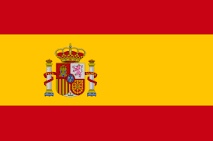Portugal
Students report
The origins of Bragança, as a region, may be attributed to the tenth or eleventh century. The origins of the settlement are more dubious - as, incidentally, in the case of other cities. Everything seems to indicate that in the place where the city rises there would have been a “castro”, eventually Romanized that could be the origin of the town. Only the realization of archaeological prospects can provide details that would allow to date with greater certainty the origin of Bragança (the present place name - Bragança - derives from the etymon “berge” (of the Germanic: hills) that, thus, would mean Land of the Hills).
In any case, the locality had been of strategic importance since its inception, above all at the military level and the control of the traffic routes, largely as a result of its location. This allows contextualizing and understanding the administrative measures instituted by monarchs, especially during the first two dynasties, and aimed at ensuring a minimum of operation of the square. King D. Sancho granted a forum letter in June 1187, which would be successively renewed by King D. Afonso III in May 1253 and later by King D. Manuel in November 11, 1514. The first charter assigned did not follow any of the models already applied which demonstrates the specific importance attributed to the village, the first in the province of Trás-os-Montes to have a charter.
Thus, Bragança grows slowly, consolidating its dominant position in the region, from the administrative, military and religious point of view. By the middle of the thirteenth century Bragança already has four parishes. But it was only in February 20, 1464, that the title of town was granted to the town of Bragança.
In the fourteenth and fifteenth centuries the demographic growth is visible, especially in the outside walls. In the sixteenth, seventeenth and eighteenth centuries, there is a greater dynamism and urban growth - a result of the economic, political and military conjuncture - evident in the construction and / or remodelling of all churches, convents and houses emblazoned. Much will have contributed to the economic dynamics related to the transformation of silk - whose final products were exported and sold throughout the kingdom with great fame - as well as the industries that the documents and the name place of the city indicate existed (Prateiros, Sineiros , Oleiros, Ponte das Tenarias, Ferrarias, etc.), more aimed at the regional market.
In fact, the urban area of the city in the beginning of the twentieth century was almost coincident with that which existed at the end of the sixteenth century, except for one or another peripheral artery, then in the beginning of urbanization. In the numbering of 1530, Bragança, counted on about 2000 inhabitants, being the greater agglomerate of Trás-os-Montes. By the middle of the eighteenth century, the population was around 3,500 people and was already assumed as the capital of the province.
To this dynamism and growth will not have been strange the activity triggered by the Jews who here settled down, in great number after their expulsion of Castile by the Spanish Kings in the end of century XV, stimulating the commerce and the industry, mainly the silk one.
But the eighteenth century would be a century of contrasts, marked by several crises and attempts to restart the industrial field.
In the agricultural field, the changes initiated would also contribute to the great crisis of the early nineteenth century, when the great industrialists left the city. If seven hundred is a century of economic growth, especially with Marquês de Pombal - where only the Bragança silk industry directly occupied about a thousand workers - it is also in the final phase of this century and in the beginning of the following that the town closed itself to the world.
The nineteenth and twentieth centuries - with the exception of short periods of time when crises in the production of raw materials in industrialized countries such as England, France and Italy allowed a momentary rebirth of this region's production, especially in the field of sericulture - are marked by rurality, stagnation and growing interiority. Until the end of the 19th century, Bragança never surpassed the 6000 inhabitants' threshold and until the middle of the 20th century, the Northeast (Bragança region) remained under a demographic regime with predominant characteristics of the Old Regime. The process of stagnation or even of retrocession installed themselves in the town.
Source from the City Hall of Bragança
The Agrupamento de Escolas Abade de Baçal aims to be a reference for the community, in which it is inserted, promoting excellence and betting on strategies that contribute to this:
- • Diverse and flexible training offer capable of responding to a heterogeneous public;
- • Technological and pedagogical innovation;
- • Building a quality relational environment.
The Agrupamento de Escolas Abade de Baçal, Bragança, is made up of the Abade Baçal Secondary School, the EB School 1,2,3 Augusto Moreno, the EB School of Izeda, three basic schools of the 1st Cycle (Escola Básica nº 8 - Artur Mirandela, Basic School of Parada and Basic School of Rossas) and five kindergartens (Kindergarten of the Station, Kindergarten of Rossas, Kindergarten of Parada, Kindergarten of Salsas and Kindergarten of Izeda ). The Headquarters of the Group, the Secondary School Abade de Baçal, is located about 40 kilometers from Izeda, and the remaining units are located in the urban perimeter and in the rural perimeter.
The school equipment and facilities have a very good quality in the main school (fruit of a process of requalification by Parque Escolar) and of good quality in Escola EB 1,2,3 Augusto Moreno and in Escola EB JI de Izeda and of regular quality in the other units.
There are about 150 trainees enrolled in adult education and training courses and in workshops of different types, which complement the educational offer of the Agrupamento in these places, in the Izeda Prison and in the Prison in Bragança, to which the Agrupamento is associated, aiming to provide the citizens who leave prisons with skills to face their new lives.
The most striking feature of the Agrupamento de Escolas Abade de Baçal is, from the point of view of the professional bond, stability. The teachers in the Agrupamento represent a significant majority and are therefore responsible for ensuring an important part of the available school service. This stability constitutes a valuable asset for the Agrupamento, since it enhances the degree of identification, commitment and interaction of the teachers and the school with the surrounding environment.
Finally, as for the students, the Agrupamento receives students from different backgrounds (from the rural world and from the town itself), and is therefore an institution at this level, very heterogeneous. The school results of the students are above the average of the Region. In the last decade, the school occupies a high place among schools in the national exams.












